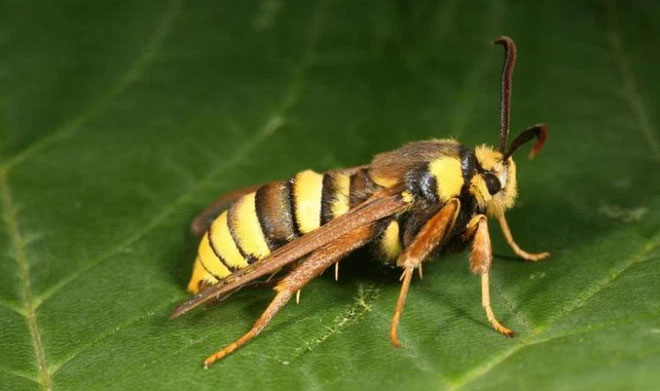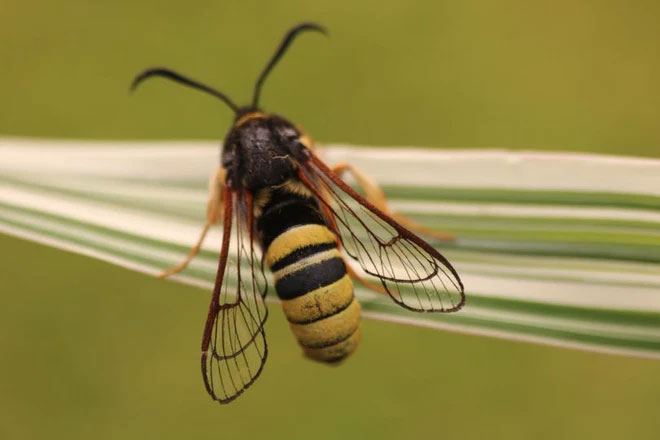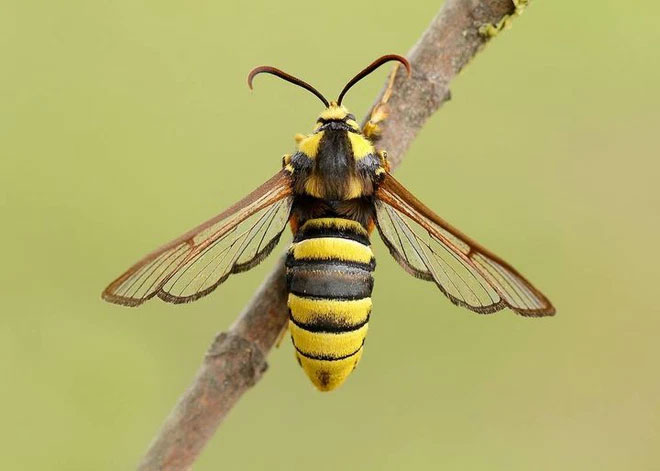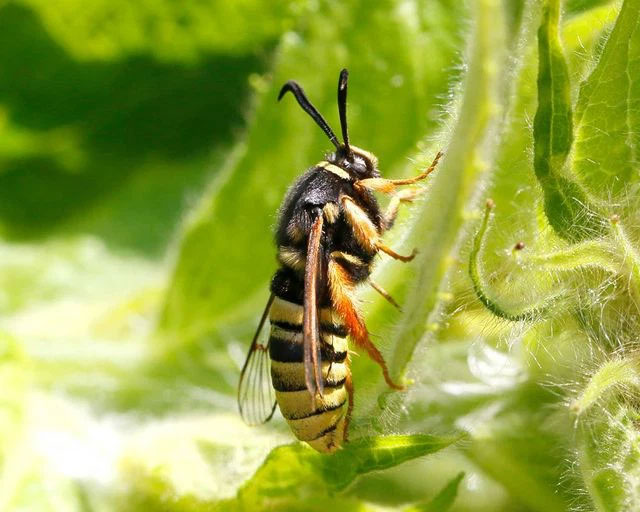You think this is a giant wasp? Oh no, it's actually just a moth
This moth is a prime example of Bates mimicry, a form of mimicry in which a harmless species has evolved to mimic the appearance or behavior of another to protect itself from predators. hunt.

In this case, the combination of the yellow color, the shape of the belly, and of the see-through wings did a great job of creating the illusion of a wasp. Only upon closer inspection do you notice that the insect has no teeth and stingers like wasps.

Despite the above-mentioned differences between the true giant wasp and the wasp moth, distinguishing the two species is very difficult, because moths do more than just mimic the appearance of wasps. but actually has a flight pattern quite like a wasp when disturbed.

Although very similar in appearance to wasps, this moth is completely harmless to humans, and its appearance alone is enough to keep most humans at a safe distance.

Sesia apiformis can be found throughout Europe, the United Kingdom, in some areas of the Middle East, and it has also recently been introduced to North America. Although harmless to humans, it is considered a secondary threat to poplars, particularly in the UK, as they feed on the wood of the poplar and lay their larvae in the tree.
Bates mimicry is a type of mimicry in biology named after the English naturalist Henry Walter Bates. In this type of mimicry, a non-venomous species masquerades as a poisonous species in order to avoid being hunted by predators. One of the most famous examples is the bee fly that disguises itself as a bee to scare birds away from attacking them. Another example is that some butterflies masquerade as other species that have an unpleasant taste that makes birds not want to eat them.
Bates imitation is the most common and well-studied type of imitation. Imitation is not limited to appearance, color, and shape, but can also mimic smells, sounds, attitudes, and movements. For example, there is a non-toxic moth that mimics the ultrasonic sound of difficult-to-eat moths, making bats afraid to eat them.
- New discovery about the giant hot planet WASP-12b
- WASP-43b - New terrifying planet than hell
- The atmosphere melted iron on the planet twice as large as Jupiter
- The new discovery: Caterpillars and their gut bacteria easily digest the most persistent plastic
- Learn about mothballs and how to deal with moth-poisoning
- Helicopters declare war on caterpillars
- Detecting water in a strange planet's atmosphere
- Discovering the planet has three times the amount of Saturn
- Black planet 'swallowed' 94% of light
- The world's most fat animals
- Detecting the first alien planet containing helium
- Find the hottest planet ever
 Why do potatoes have eyes?
Why do potatoes have eyes? 'Tragedy' the world's largest carnivorous life: Death becomes ... public toilet
'Tragedy' the world's largest carnivorous life: Death becomes ... public toilet Tomatoes were once considered 'poisonous' for 200 years
Tomatoes were once considered 'poisonous' for 200 years Detecting microscopic parasites on human face
Detecting microscopic parasites on human face